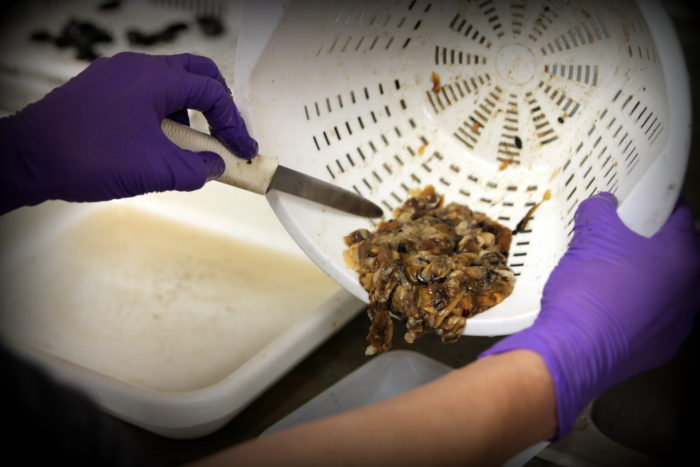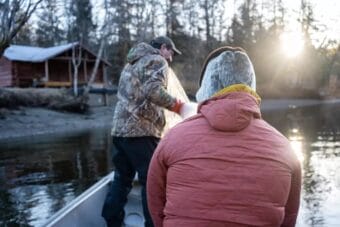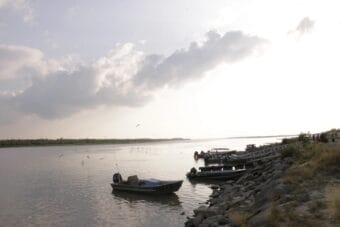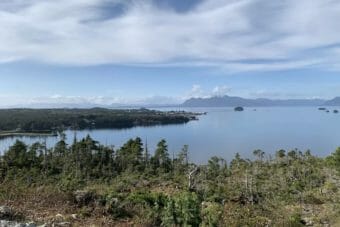
For millennia, people in Southeast Alaska have relied on the sea for sustenance. But what happens when traditional foods could be deadly? That question was behind the founding of Sitka Tribe of Alaska’s Environmental Research Lab in 2016. The lab tests shellfish from 17 Southeast communities as well as tribes on Kodiak Island.
The state tests commercial shellfish for toxins. But Sitka Tribe Resource Protection Director Jeff Feldpausch says subsistence harvesters are left to fend for themselves.
“They don’t do any public testing or certifying any beaches in Alaska, like you see in Washington and other Lower 48 states,” he said.
Feldpausch says the state’s official message is simply not to eat the clams and mussels on the beach because of the risk of toxins.
“We just figured, you know, that’s not that’s not acceptable response,” Feldpausch said. “We started down this road with, I think, 15 other tribes in Southeast as far as looking at ways to address safe access to shellfish resources.”
Paralytic shellfish poisoning, or PSP, is caused by toxic algae blooms. Filter feeding shellfish like clams and mussels store the algae’s biotoxin in their tissues, which can prove fatal when ingested.
PSP has always existed in Southeast. Harvesters could once rely on ancestral knowledge alone to be safe, but climate change has made PSP more frequent and harder to predict without testing.
“You know, a lot of the old harvesters used to say you only harvests shellfish in a month with ‘r’ in it, and we’re starting to find out that that’s not necessarily the case right now, ” Feldpausch said. “It’s just, with climate change, we’re seeing a higher frequency of PSP or biotoxin levels that can cause death.”
It was spring of 2016 when Sitka Tribe of Alaska took a risk and opened its research lab, the first of its kind in Southeast Alaska. In November, the lab was recognized by Harvard’s Honoring Nations program in the 2021 American Indian Governance awards. Out of the 70 different programs that applied, Sitka Tribe was one of the top six.
Feldpausch says that tribal sovereignty is at the heart of the lab’s mission.
“Unfortunately, statehood and the Alaska Native Claims Settlement Act separated tribes and tribal citizens from the land and the resources to where the point that tribes really don’t have much more input, or much more leverage on how those resources are managed than any other entity or individual within the state,” he says. “So basically, it’s given the tribes the ability to act to exert sovereignty over some of the resources.”
For those who use the lab’s services, it’s about more than just subsistence. Yakutat Tlingit Tribe’s environmental director Jennifer Hanlon says the initiative is part of a greater struggle for cultural preservation.
“This data — it’s really important to inform harvesters of the current levels, if there’s any concern related to when and where to harvest shellfish,” Hanlon said. “Because that is such an important subsistence food for us that nourishes our people and our communities, on so many levels. Not just nutritional, but also fostering that relationship to our ancestral lands and waters.”
Feldspauch says the tribe’s shellfish testing program is still expanding and now includes training for tribal citizens.
“We’re actually testing for two other biotoxins that are produced by harmful algal blooms. So we’re expanding our testing range,” he said. “We’re also testing subsistence resources for total mercury. And beyond that, we’ve, outside of the lab, we’ve actually grown to training tribal citizens or other tribes to do shellfish biomass surveys.”
Sitka Tribe offers free shellfish testing for Sitka residents and is continually monitoring Starrigavan Beach, with new data out every two weeks, year-round. For more information on the lab and their services, you can visit their website.


